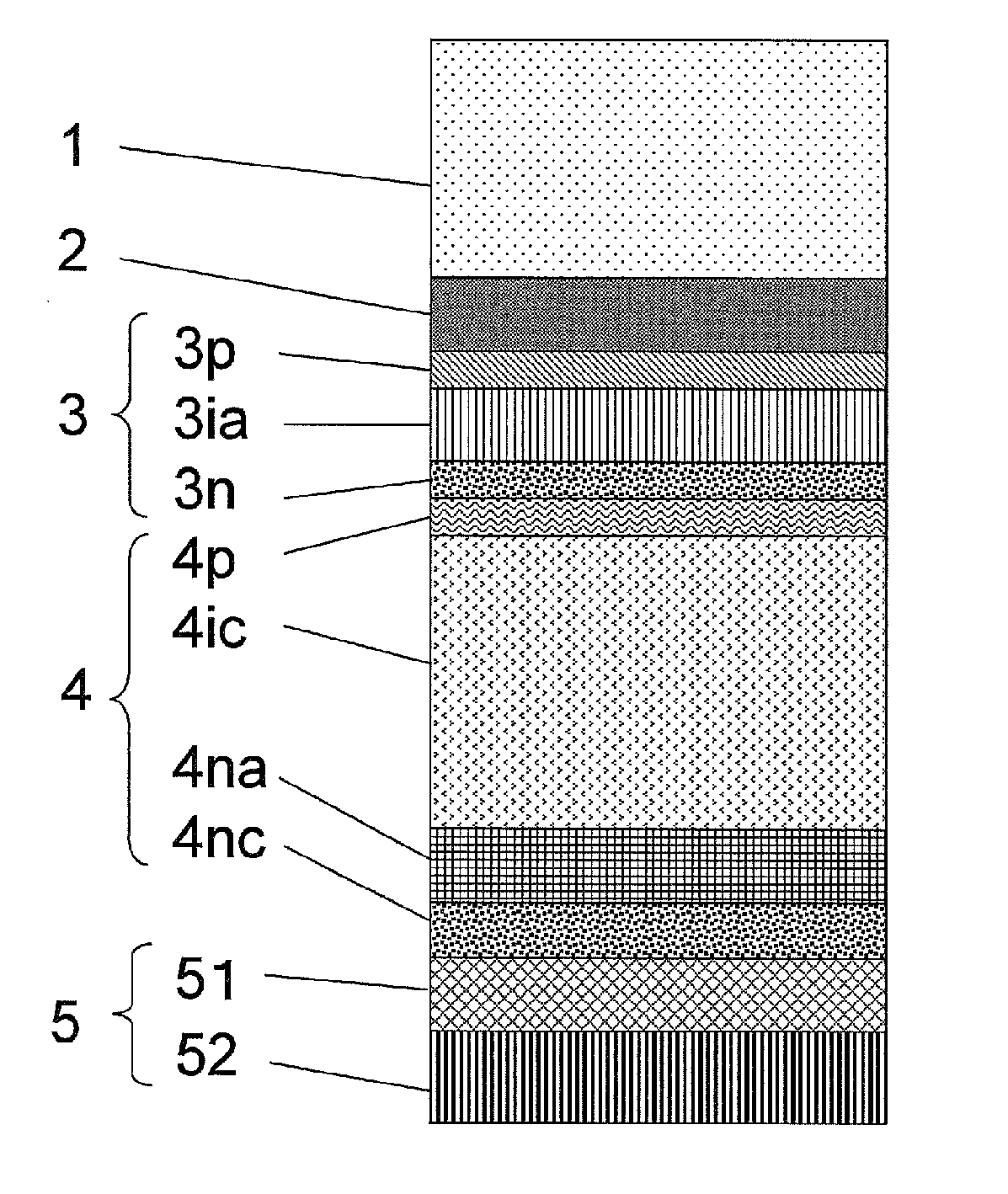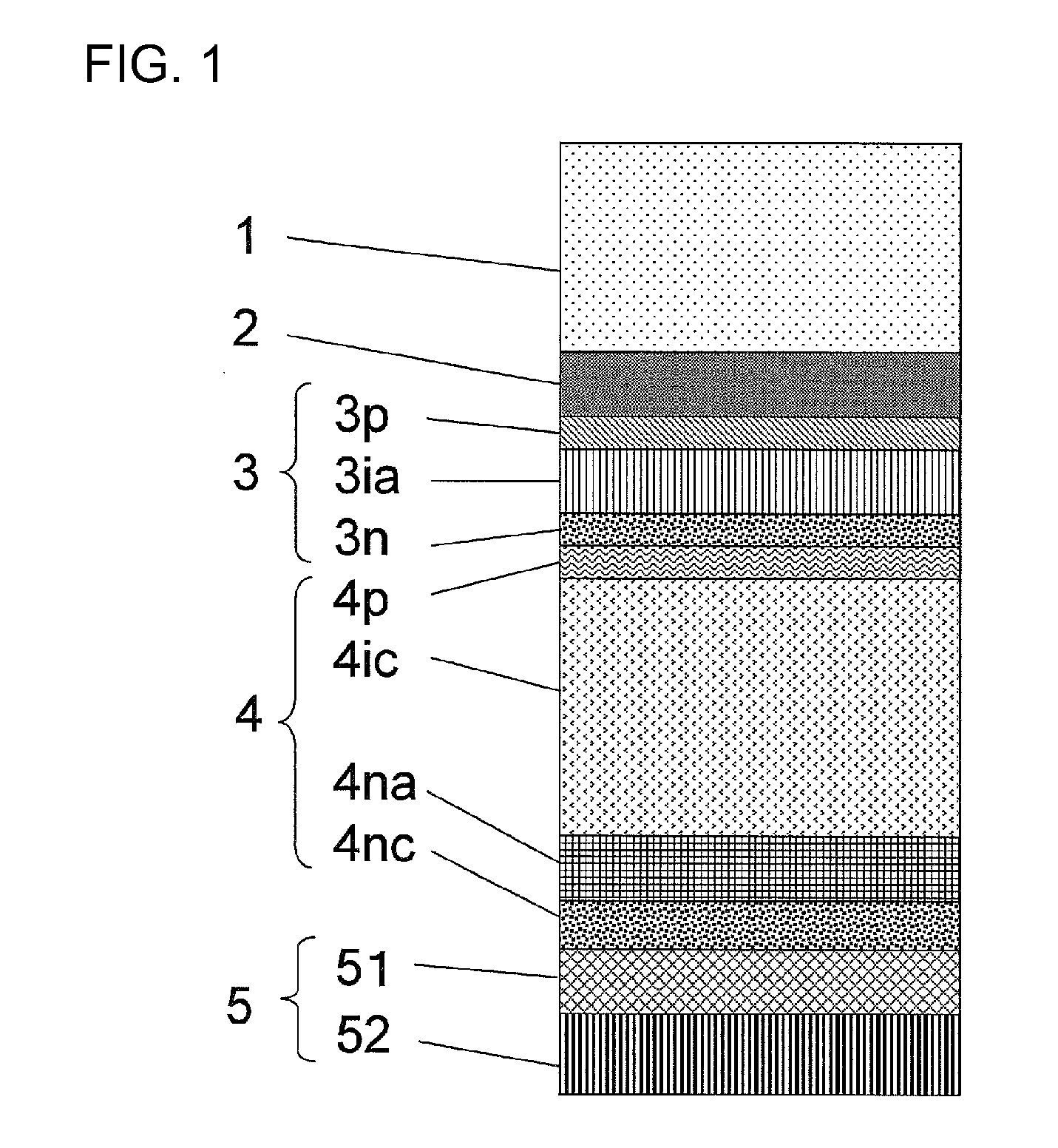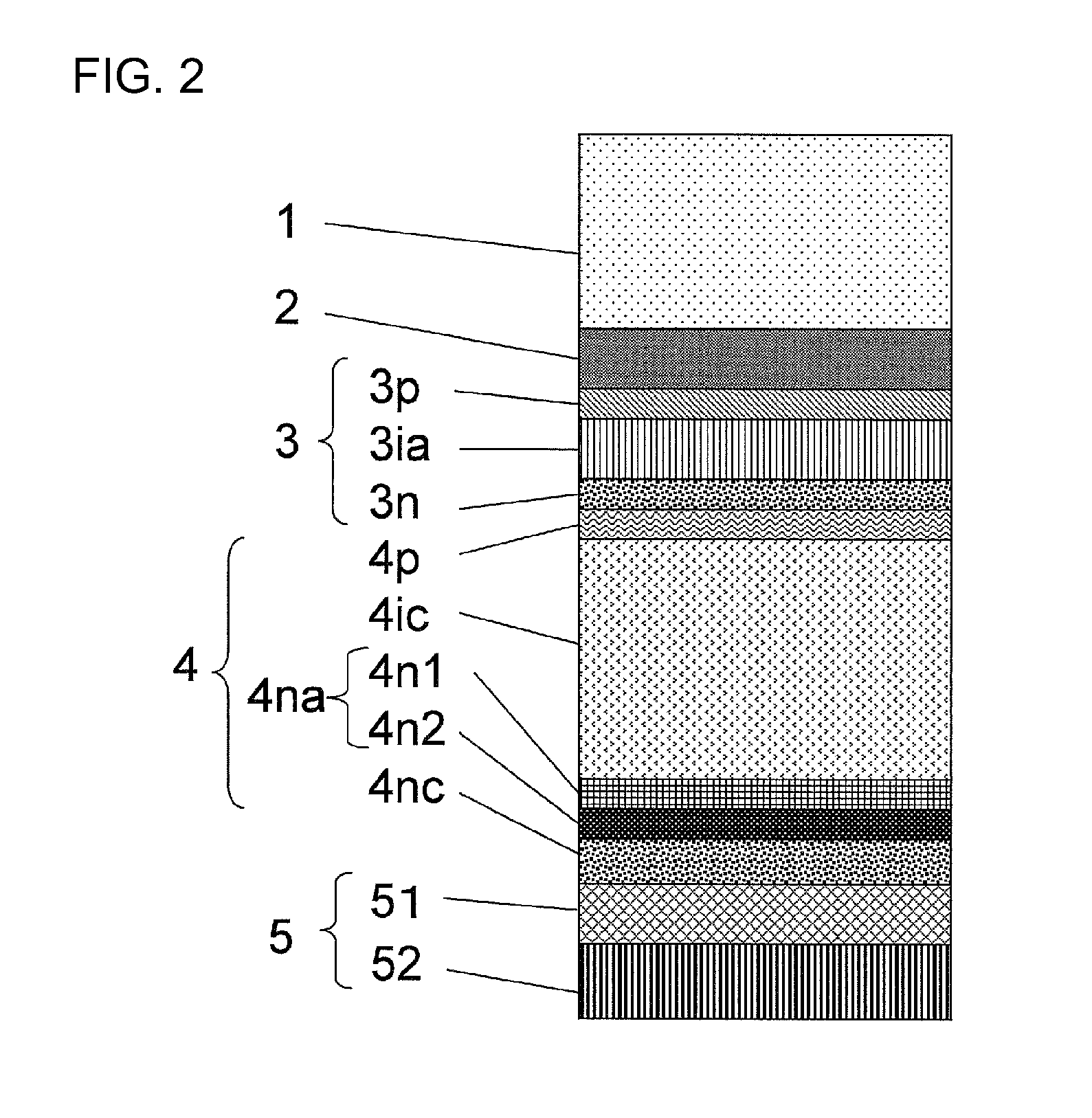Silicon-based thin film solar cell and method for manufacturing same
a thin film solar cell and silicon-based technology, applied in the direction of solid-state devices, pv power plants, semiconductor devices, etc., can solve the problems of increasing the thickness of the layer, increasing the cost and time and increasing the short-circuit current of the solar cell, so as to suppress the recombination of carriers, improve the electron collecting effect, and reduce the cost of depositing the layer
- Summary
- Abstract
- Description
- Claims
- Application Information
AI Technical Summary
Benefits of technology
Problems solved by technology
Method used
Image
Examples
example 1-1
[0092]In Example 1-1, the hybrid silicon-based thin film solar cell schematically shown in FIG. 2 was produced in accordance with the following procedure.
[0093]First, on one principal surface of the transparent substrate 1 made of a glass substrate with a thickness of 1.1 mm, the transparent conductive film 2 made of SnO2 and having a fine roughness structure on its surface was formed by a thermal CVD method.
[0094]Next, in order to form the amorphous silicon photoelectric conversion unit 3, the transparent substrate 1 with the transparent conductive film 2 formed thereon was introduced into a high-frequency plasma enhanced CVD apparatus and heated to 160° C., and thereafter, the amorphous p-type silicon carbide layer 3p with a thickness of 15 nm, the non-doped amorphous i-type silicon photoelectric conversion layer 3ia with a thickness of 300 nm, and the n-type silicon layer 3n with a thickness of 30 nm were sequentially disposed.
[0095]Further, in order to form the crystalline silic...
example 1-2
[0102]A hybrid silicon-based thin film solar cell was produced according to Example 1-1, with a difference from Example 1-1 in that in Example 1-2, the n-type amorphous silicon layer 4n2 was not formed and the n-type amorphous silicon carbide layer 4n1 was formed to have a film thickness of 8 nm.
example 1-3
[0103]A hybrid silicon-based thin film solar cell was produced according to Example 1-1, with a difference from Example 1-1 in that in Example 1-3, the n-type microcrystalline silicon oxide layer 4n1 was formed as the n-type silicon alloy layer to have a film thickness of 3 nm in place of forming the n-type amorphous silicon carbide layer 4n1 to have a film thickness of 3 nm. Film formation conditions for the n-type microcrystalline silicon oxide layer 4n1 in Example 1-3 were: a distance between the substrate surface for film formation and the electrode of 8 mm, a pressure of 1100 Pa, a plasma output of 0.16 W / cm2, and a SiH4 / PH3 / H2 / CO2 flow ratio of 1 / 6 / 200 / 4.
PUM
 Login to View More
Login to View More Abstract
Description
Claims
Application Information
 Login to View More
Login to View More - R&D
- Intellectual Property
- Life Sciences
- Materials
- Tech Scout
- Unparalleled Data Quality
- Higher Quality Content
- 60% Fewer Hallucinations
Browse by: Latest US Patents, China's latest patents, Technical Efficacy Thesaurus, Application Domain, Technology Topic, Popular Technical Reports.
© 2025 PatSnap. All rights reserved.Legal|Privacy policy|Modern Slavery Act Transparency Statement|Sitemap|About US| Contact US: help@patsnap.com



